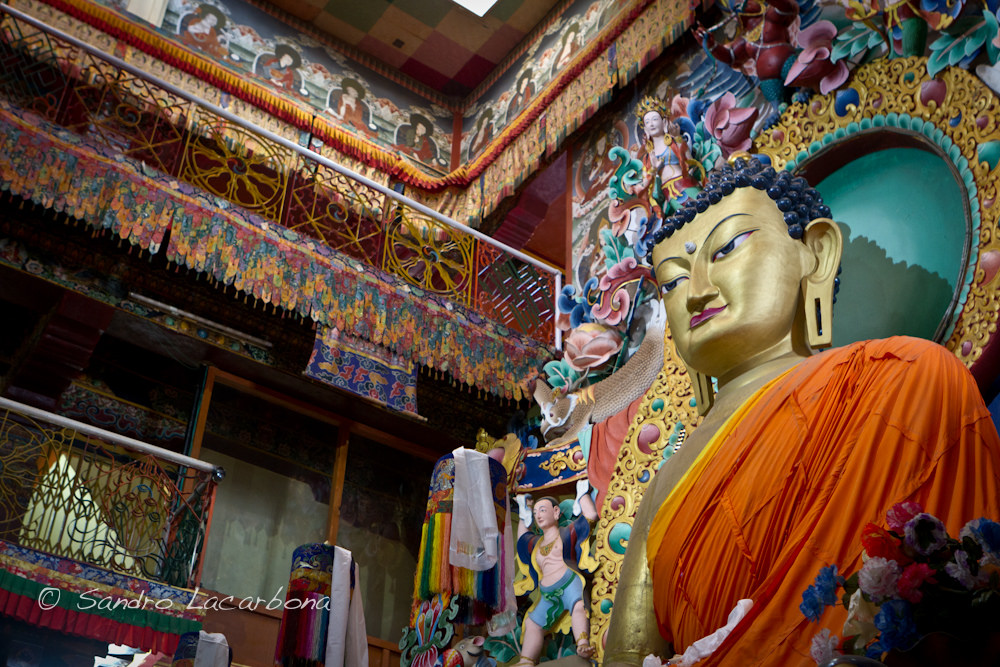“Northeast India has great tourism potential”
July 8 Pristine wilderness and a rich cultural mosaic gives northeast India remarkable potential for tourism, writes Abhilash Borah, 22, a Correspondent from Assam, India, who says improving the infrastructure will benefit tourists and the area itself.
Pristine wilderness and a rich cultural mosaic gives northeast India remarkable potential for tourism, writes Abhilash Borah, 22, a Correspondent from Assam, India, who says improving the infrastructure will benefit tourists and the area itself.
Tawang is home to the largest Buddhist monastery, and to the ancient tribes of Arunachal Pradesh. A visitor can take a breathtaking walk on the ingenious living root bridges across the Asia’s cleanest village in Meghalaya, then experience a pristine wilderness in the only floating National Park in the world, the Keibul Lamjau National Park in Manipur.
Try an elephant safari, looking for the exotic unicorn rhinos in the Kaziranga National park, a UNESCO World Heritage Site or discovering Majuli – an interesting riverine island hosting the rich neo-Vaishnavite culture with its distinct tradition and culture in Assam. Take part in the famous Hornbill Festival in Nagaland, and many other fascinating soul-soothing places that are the pride of Northeast India. It creates a lasting impact for anyone who visits this abode and experiences a rich cultural mosaic of natural beauty, the spirit of universal brotherliness and societal fabric!
A kaleidoscope of rich traditional values, deep cultural understanding and universal brotherhood ethics among its citizens, a variety of ethnic tribes having fascinating culinary heritage – it is the northeast! Geologically speaking, Digboi, one of the Asia’s oldest oil producing sites, where the first oil well in Asia was drilled. Discovered in the early days of oil exploration, it has been a destination of oil and other coal excavation. Undoubtedly Northeast is one of those amazing and rich oil, petroleum, natural gas and mineral-producing sites which has been a big factor for boosting the region’s economy and the country’s GDP increase.
And even though Northeast India is blessed with spectacular gifts of nature, the attention the region should receive is far less than its deserving merits. Comprised of the states of Assam, Arunachal Pradesh, Meghalaya, Mizoram, Manipur, Nagaland, Tripura and Sikkim, collectively known as the “Eight Sisters,” the region has the potential to emerge as an enchanting destination of Incredible India. It only needs an honest and positive thrust by policy-makers, propelling and implementing it in the right direction with adequate monitoring efforts, leaving no stone unturned, to transform the neglected region into one of the most sought-after travelling destinations for visitors seeking pleasure, enjoyment, and recreation.
If there is something that can advance the economy of the area to an all-time high, bring inclusive growth and development, the solution is to look for the potential in its fascinating tourism industry.
With influx of tourists from all corners of the world, the rural communities have wonderful opportunities to display their rich resources to those visitors, providing revenue to upgrade the existing social, cultural and infrastructural fabric. Northeast India’s rich treasure of cultural heritage and exotic presence of flora and fauna play a crucial role in forwarding the tourism industry. This can only multiply the benefits for both the pleasure-seeking tourists and the societal structure of the region, provided no harm is inflicted upon the environment and ecosystem functioning.
Having spectacular biodiversity, wildlife, culture, tribes, snow-capped Himalayas, tropical forests, shrines of diverse religions, ancient villages and historically important archaeological sites, the Northeast provides a wonderful opportunity for exploratory tourism at its very best. Governmental authorities should take essential steps to enhance rural entrepreneurship, youth and capacity-building programmes that will groom the rural population to the possibilities of earning income in a fast changing and globalised world.
Media have to play greater role in bringing the stories of Northeast India to its ever growing viewers. In earlier cases there has not been a strong commitment to do this.
Unfortunately, militant insurgency has been a bane for the region, engulfing the peace and security into a major crisis for which the tourism industry suffers. Torrential rain, floods, erosion, and landslides are regular events that must be addressed with proper management, utilising the best scientific tools and tackling the unfortunate events that hamper the lives and livelihoods of the people.
Unfortunately, due to the presence of such obstacles, the area’s tourism potential is unexplored, under-explored and not up to a satisfactory mark. Due to lack of marketing activities and state-of-art infrastructural facilities, the tourism industry suffers badly. Now it is the time to renew efforts and address the crying needs.
It is imperative to create a multi-dimensional approach towards addressing the issues, which are focused on socio-cultural and economic issues – essential for all-round development of the key region in a quest to bring growth, peace and development.
photo credit: Galden Namgey Lhatse bouddha via photopin (license)
………………………………………………………………………………………………………………………………………………………
About Me: I am an Associate Fellow to The Royal Commonwealth Society, United Kingdom and India’s Global Youth Ambassador to United Nation’s A World At School global education initiative. International relations, education advocacy, science and society, journalism, and geosciences are my passion and interests where my heart lies. I am an ambitious young leader who aspires to one day lead India to the forefront of negotiations for nuclear disarmament in my quest to build a just, better, brighter and amazing world.
………………………………………………………………………………………………………………………………………………………
Opinions expressed in this article are those of the author and do not necessarily represent the views of the Commonwealth Youth Programme. Articles are published in a spirit of dialogue, respect and understanding. If you disagree, why not submit a response?
To learn more about becoming a Commonwealth Correspondent please visit: http://www.yourcommonwealth.org/submit-articles/
………………………………………………………………………………………………………………………………………………………




